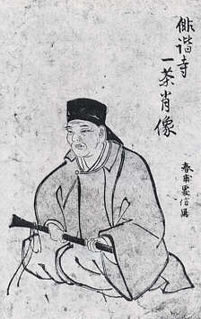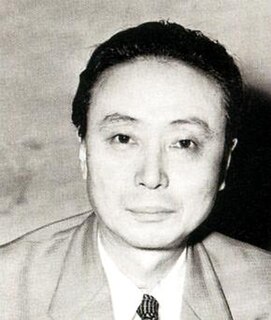 W
WAbutsu-ni ; the -ni suffix means "nun")) was a Japanese poet and nun. She served as a lady-in-waiting to Princess Kuni-Naishinnō, later known as Empress Ankamon-in. In approximately 1250 she married fellow poet Fujiwara no Tameie. She had two children with him. Following his death in 1275, she became a nun. A dispute over her son's inheritance led her, in either 1277 or 1279, to travel from Kyoto to Kamakura in order to plead on her son's behalf. Her account of this journey, told in poems and letters, was published as Izayoi nikki, her most well-known work.
 W
WFujiwara no Kanezane , also known as Kujō Kanezane , is the founder of the Kujō family, although some sources cite Fujiwara no Morosuke (908-960) as its founder.
 W
WFujiwara no Michinaga was a Japanese statesman. The Fujiwara clan's control over Japan and its politics reached its zenith under his leadership.
 W
WFujiwara no Sanesuke , also known as Go-Ono no Miya (後小野宮), was fourth son of Fujiwara no Tadatoshi. He became udaijin in 1021, and lived to be ninety. He became adopted heir of his grandfather Saneyori, the head of Ononomiya family (小野宮家), and he inherited vast estate and documents of Ononomiya family. Sanesuke had a thorough knowledge of customs and rites, so he was called Kenjin Ufu (賢人右府). He wrote the diary Shōyūki (小右記) for fifty years.
 W
WFujiwara Sadaie (藤原定家), better-known as Fujiwara no Teika, was a Japanese poet, critic, calligrapher, novelist, anthologist, scribe, and scholar of the late Heian and early Kamakura periods. His influence was enormous, and he is counted as among the greatest of Japanese poets, and perhaps the greatest master of the waka form – an ancient poetic form consisting of five lines with a total of 31 syllables.
 W
WRoppa Furukawa was a Japanese comedian.
 W
WEmperor Go-Nara was the 105th Emperor of Japan, according to the traditional order of succession. He reigned from June 9, 1526 until his death in 1557, during the Sengoku period. His personal name was Tomohito (知仁).
 W
WEmperor Hanazono was the 95th emperor of Japan, according to the traditional order of succession. His reign spanned the years from 1308 through 1318.
 W
WHara Takashi was a Japanese politician who served as the Prime Minister of Japan from 1918 to 1921.
 W
WIshin Sūden also known as Konchiin Sūden, was a Zen Rinzai monk and advisor to Tokugawa Ieyasu, and later to Tokugawa Hidetada and Iemitsu on religious matters and foreign affairs. He played a significant role in the initial development of the Tokugawa shogunate.
 W
WIzumi Shikibu was a mid-Heian period Japanese poet. She is a member of the Thirty-six Medieval Poetry Immortals . She was the contemporary of Murasaki Shikibu, and Akazome Emon at the court of empress Joto Mon'in.
 W
WKōichi Kido served as Lord Keeper of the Privy Seal of Japan from 1940 to 1945, and was the closest advisor to Emperor Hirohito throughout World War II. He was convicted of war crimes and sentenced to life imprisonment, of which he served 6 years before being released in 1953.
 W
WKimura Kenkadō was a Japanese scholar, artist and art connoisseur.
 W
WAya Kitō was a Japanese diarist. She wrote about her personal experiences living with spinocerebellar ataxia which was later published in the book 1 Litre no Namida.
 W
WKobayashi Issa was a Japanese poet and lay Buddhist priest of the Jōdo Shinshū sect known for his haiku poems and journals. He is better known as simply Issa (一茶), a pen name meaning Cup-of-tea. He is regarded as one of the four haiku masters in Japan, along with Bashō, Buson and Shiki — "the Great Four."
 W
WDoppo Kunikida was a Japanese author of novels and romantic poetry during the Meiji period, noted as one of the inventors of Japanese naturalism.
 W
WMatsudaira Ietada , also known as Matsudaira Tomomo no Suke, was a Japanese samurai of the Sengoku period.
 W
WMichitsuna no Haha was a Heian period writer in Japan. Her true name is unknown to history. The term Michitsuna no Haha literally translates to Michitsuna's mother. She is a member of the Thirty-six Medieval Poetry Immortals .
 W
WMinamoto no Michichika was a Japanese noble and statesman of the late Heian period and early Kamakura period. Serving in the courts of seven different emperors, he brought the Murakami Genji to the peak of their success. He is also commonly known as Tsuchimikado Motochika , and in Sōtō Zen buddhism as Koga no Michichika .
 W
WMurasaki Shikibu was a Japanese novelist, poet and lady-in-waiting at the Imperial court during the Heian period. She is best known as the author of The Tale of Genji, widely considered to be the world's first novel, written in Japanese between about 1000 and 1012. Murasaki Shikibu is a descriptive name; her personal name is unknown, but she may have been Fujiwara no Takako , who was mentioned in a 1007 court diary as an imperial lady-in-waiting.
 W
WKafū Nagai was the pseudonym of the Japanese author, playwright, essayist, and diarist Nagai Sōkichi. His works are noted for their depictions of life in early 20th-century Tokyo, especially among geisha, prostitutes, cabaret dancers, and other denizens of the city's lively entertainment districts.
 W
WTakashi Nagai was a Catholic physician specializing in radiology, an author, and a survivor of the atomic bombing of Nagasaki. His subsequent life of prayer and service earned him the affectionate title "saint of Urakami," and he has subsequently been honoured with the title of Servant of God, the first step towards Catholic sainthood.
 W
WRaiden Tameemon (雷電爲右衞門), born Seki Tarōkichi, was a Japanese sumo wrestler from Tōmi, Nagano Prefecture. He is considered one of the greatest rikishi in history, although he was never promoted to yokozuna. To date, he holds the record for best top division win ratio of all time.
 W
WEisaku Satō was a Japanese politician who served as Prime Minister of Japan from 1964 to 1972. He is the third-longest serving Prime Minister, and has been the second longest uninterrupted service as Prime Minister in Japanese history.
 W
WSei Shōnagon was a Japanese author, poet, and a court lady who served the Empress Teishi (Sadako) around the year 1000 during the middle Heian period. She is the author of The Pillow Book .
 W
WJun Takami was the pen-name of a Japanese novelist and poet active in Shōwa period Japan. His real name was Takami Yoshio.
 W
WKyokutei Bakin was a late Japanese Edo period gesaku author best known for works such as Nansō Satomi Hakkenden and Chinsetsu Yumiharizuki. Both are outstanding examples of nineteenth-century yomihon, or "books for reading".
 W
WEmperor Uda was the 59th emperor of Japan, according to the traditional order of succession.
 W
WMatome Ugaki was an admiral in the Imperial Japanese Navy during World War II, remembered for his extensive and revealing war diary, role at the Battle of Leyte Gulf, and kamikaze suicide hours after the announced surrender of Japan at the end of the war.
 W
WUmewaka Minoru I , also Umewaka Rokurō LII (五十二世梅若六郎), was a Noh actor of late Edo and early Meiji period Japan. A prolific teacher of Noh in the Meiji period, he taught a variety of people including the painter Kōgyo, the writer Ezra Pound, and the scholar and art collector Ernest Fenollosa. His diary, published under the title Umewaka Minoru Nikki, spans much of his life, and records in great detail his activities and the world of Noh in the Meiji period.